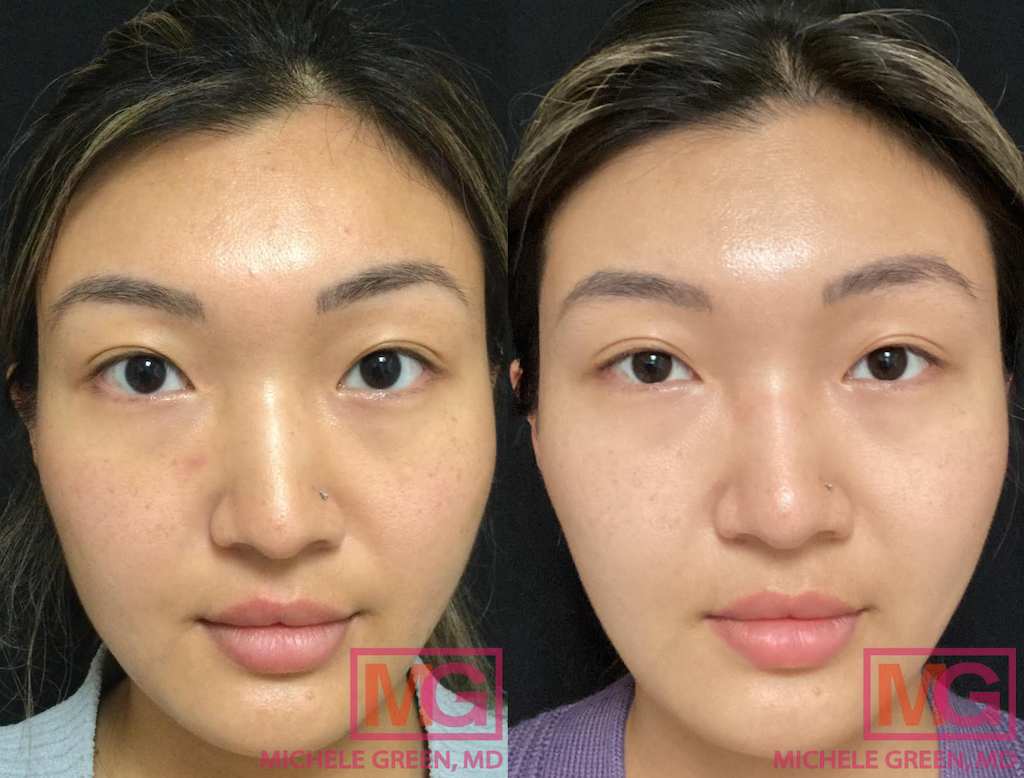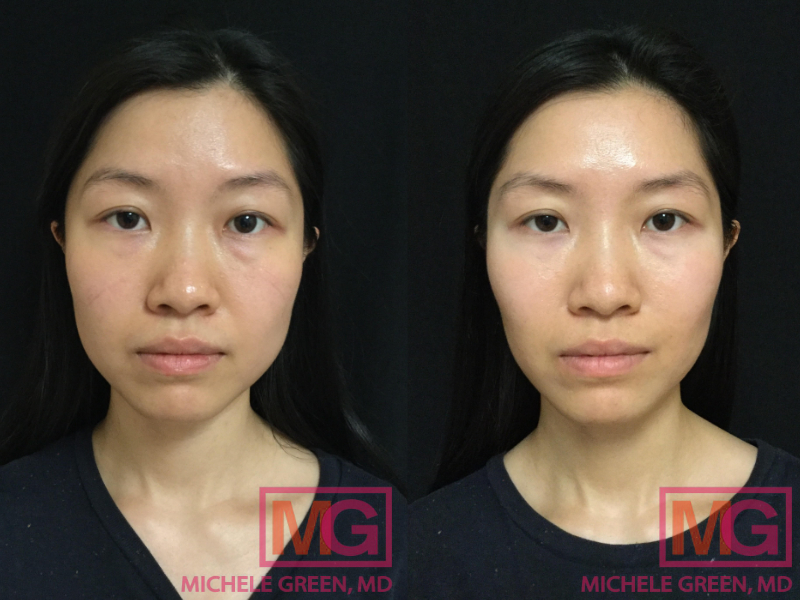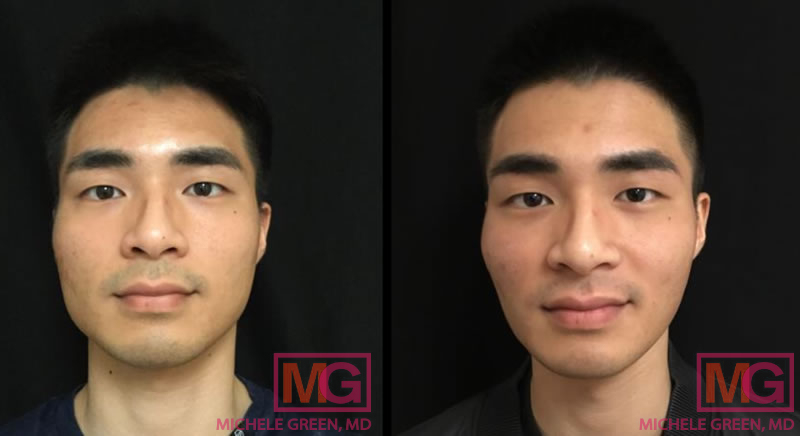Michele S. Green M.D., FAAD., is a Board-Certified Cosmetic Dermatologist, Fellow of the American Academy of Dermatology, and has been an international leader in cosmetic dermatology for over 25 years. Upper East Side patients and those around the globe flock to her practice for cosmetic dermatology treatment. A graduate from Yale University, with an MD and Chief residency from The Mount Sinai School of Medicine in NYC, Dr. Green treats some of the most discerning, demanding women and men in the world, with issues ranging from premature skin aging to hyperpigmentation, rosacea, wrinkles, acne, skin laxity, hair loss, and sun damage.
What is TMJ?
During the day, our jaw muscles are some of the most active muscles in our body. While we chew gum, chat with a friend, or bite into something sticky, this amount of activity can lead to misalignment, stress, and, ultimately, pain along the temporomandibular joint.
The temporomandibular joint, or TMJ, is where the jaw bone (mandible) connects to the skull (temporal bone), essentially operating like a sliding hinge on either side of the face. The connecting parts of the bones have a cartilage covering and are separated by a small disk, designed to be shock-absorbent and keep jaw movements as smooth as possible.
Many patients feel discomfort in this joint, which is characterized by tenderness along the jawline, aches around the ear, pain in the joints of the jaw, chronic migraines, and jaw dysfunction that can lead to difficulty chewing and opening or closing the mouth, TMJ disorders can feel like they are keeping you from your highest quality of life.
While pain or soreness around the jaw joint and lower jaw do not suggest serious issues for everyone, patients may develop more serious Temporomandibular joint disorders, abbreviated as TMDs, which can suggest chronic facial pain. Luckily, TMD treatment options are available, including Botox injections.

Photo Credit: Dr. Michele S. Green
Is TMJ a medical or dental problem?
TMJ can be considered both a medical and a dental problem. Jaw clenching and teeth grinding can cause damage to the enamel, which is largely a dental concern, but the muscle tension, lockjaw, and acute pain from TMJ can also be considered a medical problem.
Ultimately, both dentists and other medical professionals, such as board-certified dermatologist, Dr. Green, know that Botox is an effective treatment to reduce the symptoms of TMJ disorders and prevent damage to the temporomandibular joint, the jaw, and the teeth. Whether you seek treatment from a dentist or a dermatologist, Botox is an effective solution to the pain and discomfort of TMJ.
How does Botox help TMJ?
Botulinum toxin type A, known colloquially as Botox, is an injectable treatment that works to essentially “freeze” the muscle at and near the injection site. While many patients may hear “Botox” and think about cosmetic treatments to eliminate frown lines and other facial wrinkles, Botox injections are in fact one of the most effective treatments for TMJ disorders.
As TMJ disorders are caused by overuse or pain in the masseter muscle of the jaw, the use of Botox acts as a muscle relaxant, which alleviates the tension along the jawline to eliminate symptoms of TMD, including headaches, lockjaw, and jaw pain. Botox for TMJ is a common off-label use of Botox that an experienced dermatologist can administer.

Photo Credit: Dr. Michele S. Green
How can Botox be used in Non-Surgical Jawline Contouring or Jaw Reduction?
Into the bargain of Botox injections effectively helping TMJ symptoms, Botox injections into the masseter muscle can also effectively produce a contouring effect for the jawline and relieve tension associated with TMJ. When injecting Botox into the lower face, it will reduce the contraction of the masseter muscle, allowing it to relax and shrink with disuse over time.
When your jawline is overused, hypertrophy or enlargement of your masseter muscles occurs. The masseter muscle in your jaw is similar to other muscles in your body in that the mare engaged, the larger they can develop. This hypertrophy can result in the jaw taking on a square shape. In addition, this can contribute to TMJ or grinding of your teeth. When Botox is injected into the masseter muscles, it shrinks the jawline, creating a V-shaped, slimmer-looking face. In addition, Botox effectively creates non-surgical jaw reduction, without any recovery time, in a matter of minutes.
What is Bruxism and How can Botox help?
Bruxism is a common condition that is characterized by consistent, involuntary teeth grinding and/or jaw clenching. Bruxism can occur both during the day and at night while you are asleep. This tension along the jaw can cause a variety of symptoms including jaw pain, clicking or tightening of the jaw muscles that limits how much you can open your jaw (sometimes known as lockjaw), tension headaches and migraines, earaches, tooth or gum sensitivity, and damage to the tooth enamel. Furthermore, the constant clenching of the masseter muscles, which are the muscles that connect your cheek and your jaw and are responsible for chewing, can cause the jawline to take on a severe square shape as the muscles along your jawline grow larger. While many people suffer from chronic jaw clenching and teeth grinding, the risk of potential damage to the teeth and the pain that bruxism can cause are two very compelling reasons to seek treatment options.

Photo Credit: Dr. Michele S. Green
Does Botox help TMJ pain permanently?
Botox is a highly effective treatment in reducing the pain that is a symptom of TMJ disorders, including headaches, migraines, swollen facial muscles, soreness and pain in the neck, shoulders, and ears, and jaw dysfunction. The effects of Botox, while very effective at reducing pain, are only temporary, lasting between 3 and 4 months. Over time, the body metabolizes the botulinum toxin and the effects will begin to wear off. However, the Botox procedure can be repeated every four months in order to maintain the results of the treatment. When you have your appointment with Dr. Green, she will help to determine the treatment plan that will keep you pain-free over time.
How Can You Get Started with Botox for TMJ Today?
If you are seeking a non-invasive treatment option for TMJ, or interested in Botox injections in the masseter muscles for cosmetic facial slimming, Dr. Green in NYC can help. Dr. Michele Green is an internationally renowned board certified cosmetic dermatologist and is known to be one of the best Botox injectors in New York. Dr. Green has been consistently voted as one of the “Best Doctors” by Castle Connelly, New York Magazine, Super Doctors, and The New York Times as a pioneer in the field of cosmetic and medical dermatology. Please call the office today at 212-535-3088 or contact us online to schedule a consultation to discuss if you are suffering from the discomforts of TMJ, it’s time to schedule a consultation with Dr. Michele Green in New York.
For more information, visit Dr. Brian A. Levine's social media:

























